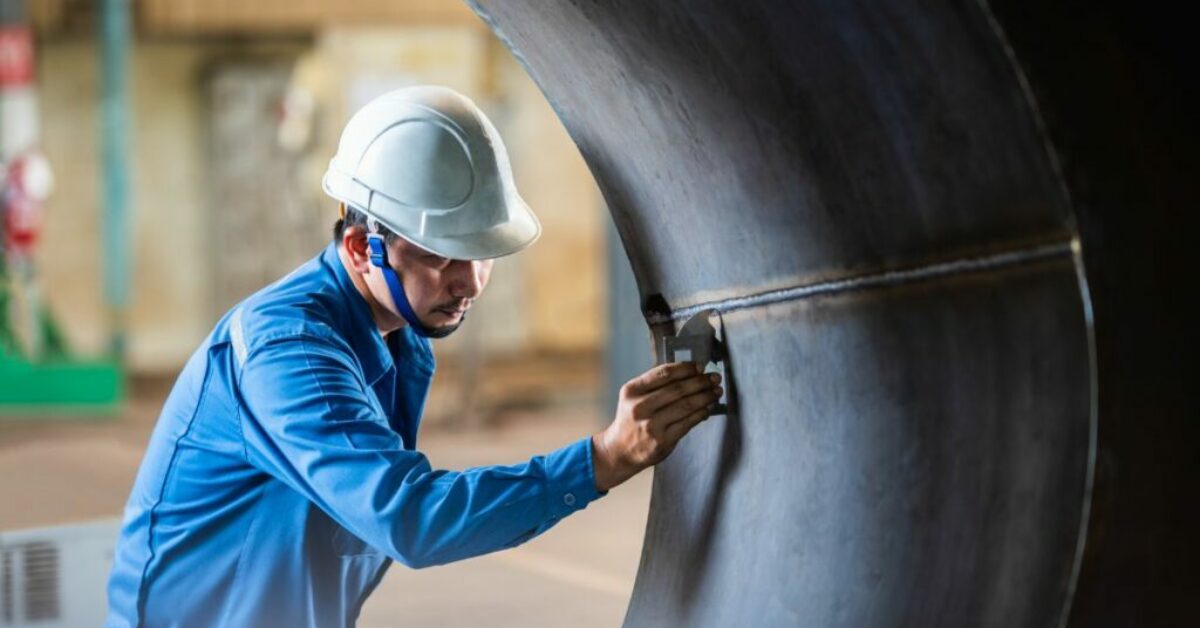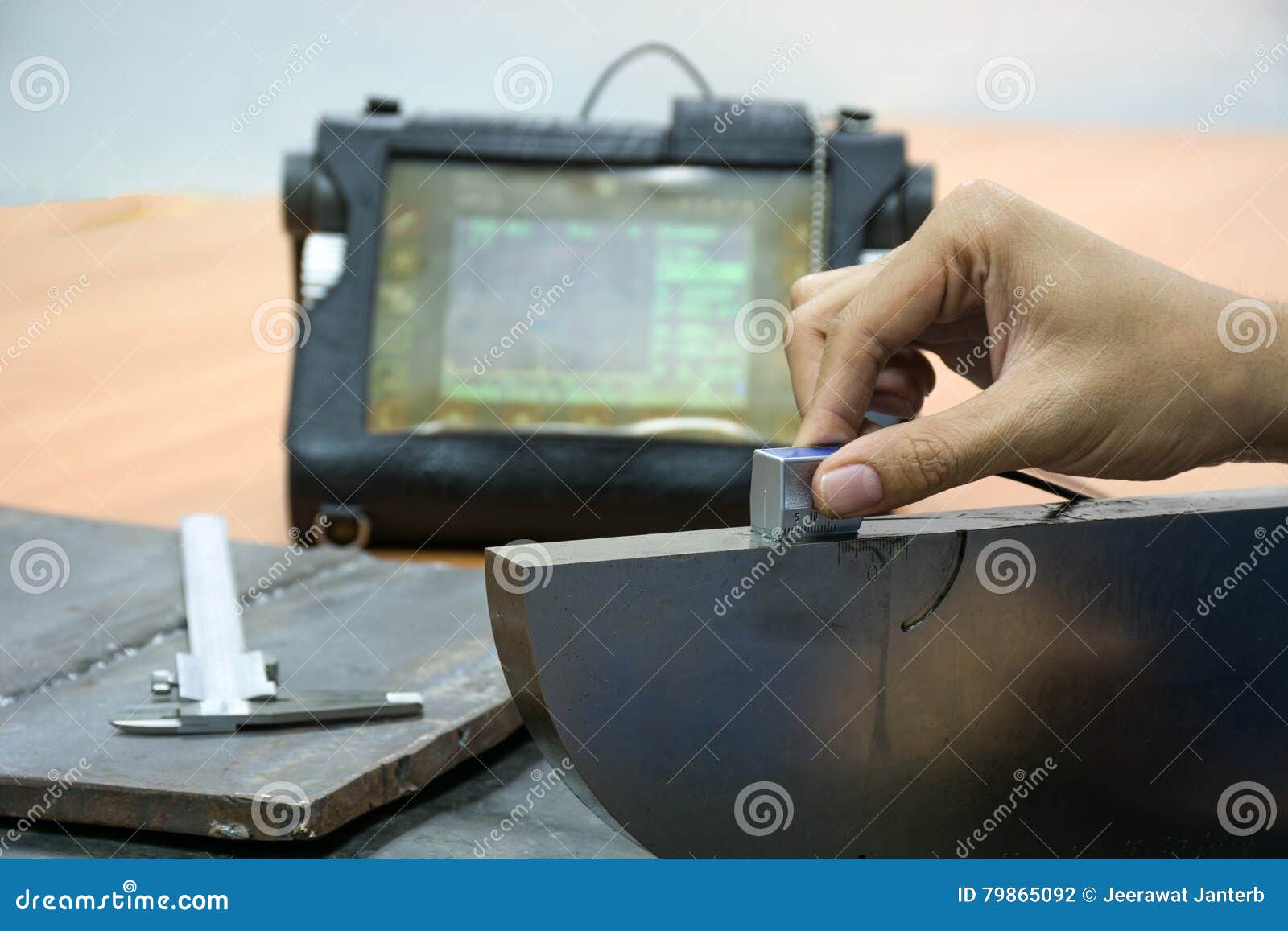How Regular Welding Inspection Madison Can Save You Time and Money
Checking Out Advanced Devices and Techniques for Accurate Welding Evaluation
In the realm of welding evaluation, the pursuit of accuracy and integrity is critical, spurring the advancement of sophisticated devices and techniques. Laser scanning technologies and automatic inspection systems, outfitted with man-made knowledge, are redefining the landscape by decreasing human error and boosting safety actions.
Ultrasonic Examining Developments
Ultrasonic testing innovations regularly stand for the center of improvements in welding evaluation technologies. These advancements have dramatically enhanced the capacity to spot and review interruptions within bonded frameworks, guaranteeing enhanced integrity and security - Welding Inspection Madison. Ultrasonic screening uses high-frequency acoustic waves to pass through products, providing thorough info concerning inner attributes without triggering damages. The latest growths in this area have focused on raising accuracy, rate, and the capability to translate intricate information.

In addition, improvements in software algorithms for information evaluation have actually enhanced the precision of flaw discovery and sizing. Automated ultrasonic screening systems now offer high-resolution imaging, making it possible for thorough assessments of weld high quality. These systems are typically integrated with advanced visualization tools, which promote the analysis of results.
Radiographic Inspection Methods
While ultrasonic screening innovations have established a high requirement in non-destructive evaluation, radiographic assessment techniques remain to play an essential duty in welding assessment by offering one-of-a-kind understandings right into material honesty. Radiographic testing (RT) uses making use of X-rays or gamma rays to permeate materials, producing a radiograph that aesthetically represents the inner framework of a weld. This imaging capacity is very useful for spotting subsurface issues such as porosity, inclusions, and fractures that might not show up through surface area inspections.
The procedure involves positioning a radiation source on one side of the weld and a detector on the opposite side. Variants in product density and thickness impact the depletion of the rays, generating a contrasting image that specifically defines problems. RT is particularly advantageous for checking thick areas and complex geometries where various other approaches might fall brief.
Regardless of its effectiveness, radiographic assessment must be conducted with rigorous adherence to safety procedures because of the hazardous nature of ionizing radiation. Additionally, the interpretation of radiographs requires proficient employees, as the quality of the analysis straight influences the reliability of the evaluation. Ongoing developments in digital radiography are improving photo clarity and analysis efficiency, enhancing RT's crucial duty in making sure weld top quality.
Laser Scanning Advances
Welcoming laser scanning innovation in welding inspection has transformed the evaluation of weld quality and integrity. This advanced approach provides a non-contact, high-resolution methods of recording thorough 3D information of weld surfaces. Unlike traditional inspection strategies, laser scanning gives quick information purchase, dramatically enhancing the efficiency and accuracy of weld analyses. The modern technology employs laser beams to produce exact 3D versions, which are important for in-depth analysis of weld dimensions, surface irregularities, and prospective issues.
Laser scanning advancements have actually resulted in considerable improvements in identifying and characterizing surface flaws such as porosity, lack of fusion, and undercuts. The high-resolution information allows examiners to do extensive analyses, making certain that welds satisfy rigorous sector standards. Moreover, this technique supports the growth of digital documents, facilitating lasting quality control and traceability.
Furthermore, laser scanning technology incorporates effortlessly with software application services developed for automated issue detection and evaluation. The resultant data can be conveniently shared and reviewed, advertising collaborative decision-making Our site procedures. As industries remain to require higher criteria for weld high quality, laser scanning continues to his response be at the leading edge, supplying unmatched precision and efficiency in welding examination.
Automated Evaluation Equipments

Automated examination systems supply the benefit of consistency, getting rid of human error and subjectivity from the inspection procedure. They are developed to operate in various settings, from manufacturing floorings to remote field websites, making sure comprehensive coverage. Welding Inspection Madison. These systems can be configured to follow details welding criteria and requirements, offering detailed reports and documentation for top quality control functions
Furthermore, the assimilation of cloud-based systems promotes the storage and evaluation of huge amounts of examination information. This enables trend evaluation and predictive upkeep, allowing manufacturers to attend to potential problems before they escalate. The fostering of automatic inspection systems is a crucial step in the direction of improving the integrity and effectiveness of welding procedures in industrial applications.

Enhancing Safety and Effectiveness
A considerable facet of enhancing security and effectiveness in welding assessment hinges on the assimilation of innovative technologies that improve operations and minimize threats. The fostering of advanced non-destructive testing (NDT) methods, such as ultrasonic screening, phased range ultrasonic testing (PAUT), and radiographic testing, plays a pivotal role in making certain structural integrity without jeopardizing the safety and security of the personnel involved. These techniques permit thorough examinations with marginal downtime, lowering prospective hazards connected with standard techniques.
Additionally, the execution of real-time information analytics and maker understanding formulas has actually changed the way evaluation data is interpreted. By employing anticipating analytics, prospective problems can be determined before they manifest right into crucial failures, guaranteeing timely treatments and upkeep. This positive strategy dramatically improves operational performance and safety and security in welding processes.
In addition, remote examination innovations, consisting of drones and robotic spiders furnished with high-resolution cameras, allow assessors to examine hard-to-reach areas without revealing them to hazardous problems. This not just enhances evaluation precision however additionally lessens human risk. By leveraging these sophisticated tools and techniques, sectors can see this achieve higher safety and security requirements and functional efficiency, eventually causing more sustainable and dependable welding assessment practices.
Verdict
The integration of advanced tools and techniques in welding assessment significantly boosts issue discovery and makes sure architectural integrity. These innovations not just boost examination effectiveness however also contribute to enhanced safety and security and top quality assurance in industrial welding applications.

Ultrasonic testing innovations regularly stand for the leading edge of advancements in welding examination innovations.While ultrasonic screening developments have actually set a high criterion in non-destructive assessment, radiographic assessment methods proceed to play an important duty in welding assessment by using unique insights right into material honesty.Embracing laser scanning innovation in welding inspection has revolutionized the analysis of weld high quality and honesty. As industries proceed to demand higher criteria for weld quality, laser scanning stays at the forefront, using unparalleled precision and effectiveness in welding evaluation.
Automated assessment systems supply the advantage of uniformity, eliminating human mistake and subjectivity from the evaluation process.